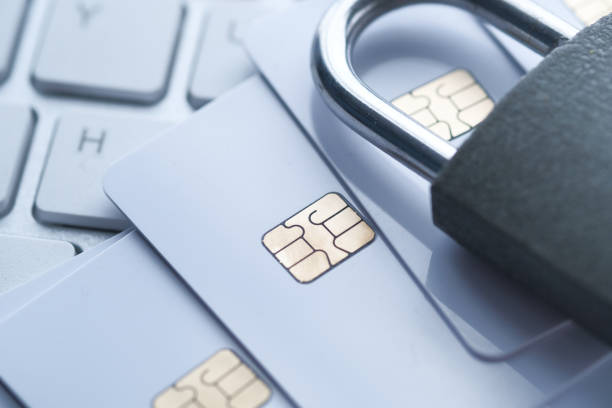In an era where digital security and streamlined user experiences are paramount, biometric authentication is emerging as a powerful tool in the financial sector. From fingerprint scanning to facial recognition, biometric methods are increasingly being used to enhance loan approval processes and secure sensitive financial transactions. While the benefits are substantial, the adoption of biometric authentication also comes with its own set of challenges. Let’s delve into how biometric authentication is reshaping loan approval and security, and weigh its advantages against its potential hurdles.
Table of Contents
ToggleThe Rise of Biometric Authentication
Biometric authentication refers to the use of unique biological characteristics, such as fingerprints, facial features, iris patterns, or voice recognition, to verify an individual’s identity. This method provides a more secure and user-friendly alternative to traditional password-based systems.
1. Enhanced Security
One of the primary benefits of biometric authentication is its heightened security. Unlike passwords, which can be forgotten, stolen, or compromised, biometric data is unique to each individual and much harder to replicate or forge. This makes it a robust defense against unauthorized access and fraud.
For loan approval processes, biometric authentication can significantly reduce the risk of identity theft and fraudulent applications. By verifying an applicant’s identity through their biometric data, lenders can ensure that loan applications are genuinely made by the individuals they claim to be, thereby enhancing the overall security of the process.
2. Streamlined User Experience
Biometric authentication offers a seamless and efficient user experience. Traditional methods, such as entering passwords or answering security questions, can be time-consuming and cumbersome. In contrast, biometric methods are typically quick and easy—users can authenticate themselves with a simple fingerprint scan or facial recognition.
In the context of loan approvals, this means that applicants can complete the verification process more swiftly and conveniently. The streamlined nature of biometric authentication not only speeds up the loan application process but also enhances user satisfaction by reducing friction and frustration.
Benefits of Biometric Authentication in Loan Processes
1. Faster Loan Approvals
With biometric authentication, the loan approval process can become much faster. By automating the identity verification step, lenders can expedite the review and approval of loan applications. This efficiency benefits both borrowers and lenders by reducing processing times and accelerating decision-making.
For example, a biometric scan can quickly confirm an applicant’s identity during the application process, allowing lenders to focus on assessing creditworthiness and other financial factors rather than spending time on manual verification.
2. Reduced Risk of Fraud
The risk of fraud is a significant concern in loan applications. Biometric authentication helps mitigate this risk by providing a more secure and reliable method of verifying identities. Since biometric data is unique to each individual, it is challenging for fraudsters to impersonate someone or manipulate biometric systems.
This enhanced security not only protects lenders from fraudulent activities but also safeguards borrowers from identity theft and unauthorized access to their financial information.
3. Improved Customer Convenience
Biometric authentication enhances the customer experience by offering a more convenient and user-friendly approach to identity verification. Borrowers no longer need to remember complex passwords or undergo tedious security checks.
This improved convenience can lead to higher customer satisfaction and loyalty, as borrowers appreciate the ease and efficiency of the biometric authentication process. In turn, this can positively impact a lender’s reputation and customer retention rates.
Challenges and Considerations
Despite its benefits, the adoption of biometric authentication in loan approval and security comes with several challenges:
1. Privacy and Data Security
Biometric data is highly sensitive and personal. As such, its collection, storage, and processing raise significant privacy and data security concerns. Unauthorized access or breaches of biometric databases could lead to serious privacy violations and identity theft.
Lenders must implement robust security measures to protect biometric data and comply with data protection regulations. This includes encrypting biometric information, ensuring secure data storage, and establishing clear policies on data access and usage.
2. Accuracy and Reliability
While biometric authentication is generally reliable, it is not without its flaws. Factors such as poor lighting, physical changes, or environmental conditions can affect the accuracy of biometric systems. For example, facial recognition systems may struggle in low light or with individuals who have undergone significant physical changes.
Ensuring the accuracy and reliability of biometric authentication systems is crucial to avoid false rejections or acceptances. Regular updates and maintenance of biometric technology can help address these issues and improve performance.
3. Cost of Implementation
Implementing biometric authentication systems can be costly. The technology requires specialized hardware and software, as well as ongoing maintenance and support. For smaller financial institutions or lenders with limited budgets, the initial investment and operational costs can be a significant barrier.
Balancing the benefits of biometric authentication with its costs is essential for lenders to make informed decisions about adopting this technology. Evaluating the return on investment and potential impact on operational efficiency can help determine whether biometric authentication is a viable solution.
Conclusion: Embracing the Future of Loan Security
Biometric authentication offers substantial benefits for loan approval and security, including enhanced protection against fraud, faster processing times, and improved customer convenience. As technology continues to advance, the integration of biometric methods into financial systems promises to create a more secure and efficient experience for both borrowers and lenders.
However, the adoption of biometric authentication also requires careful consideration of privacy concerns, system accuracy, and implementation costs. By addressing these challenges and investing in robust security measures, lenders can harness the power of biometric authentication to enhance their loan processes and safeguard their operations.
As we move forward, the role of biometric authentication in the financial sector is likely to expand, shaping the future of loan approval and security. Embracing this technology with a thoughtful approach can lead to a more secure, efficient, and customer-centric financial experience.

